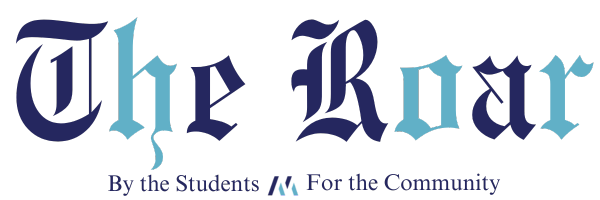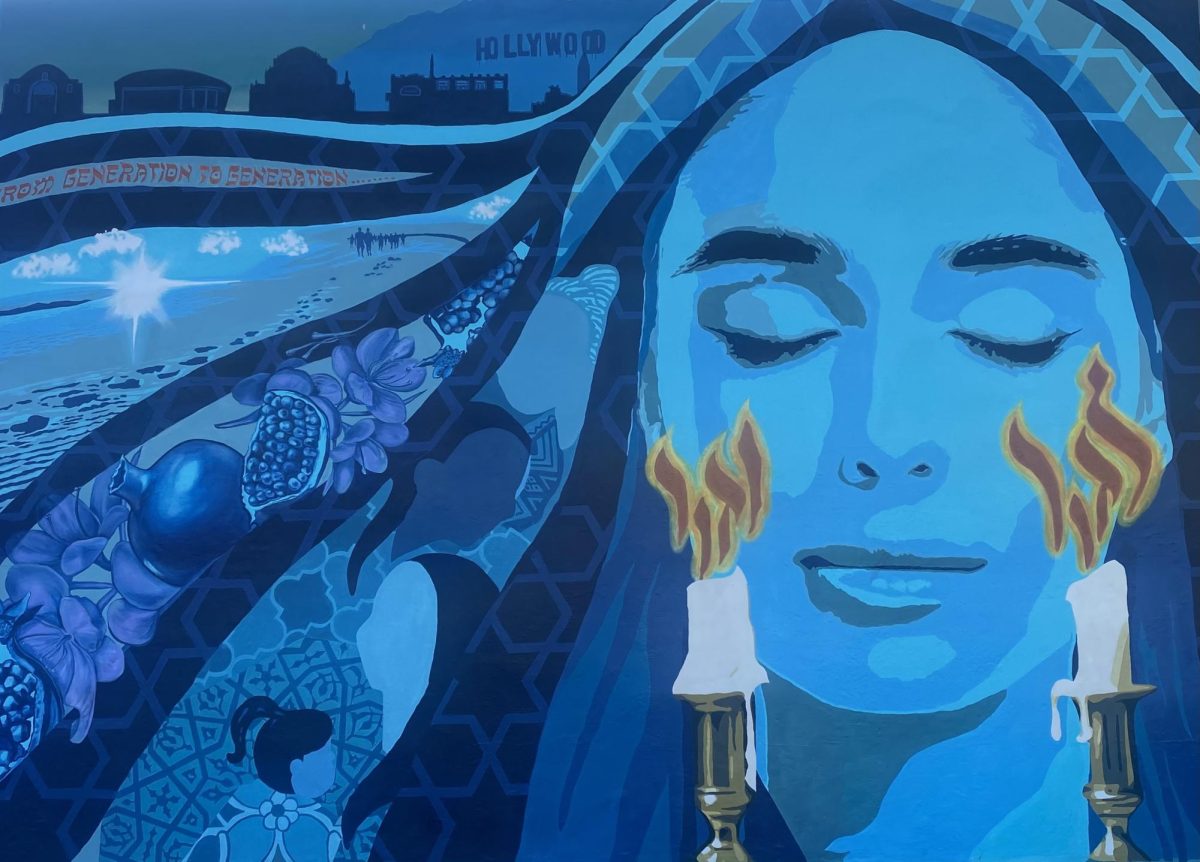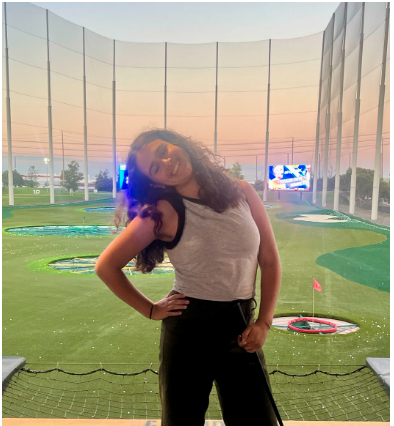On the corner of a little street off of Pico Boulevard, a burst of blue shines from the wall, spilling light and color onto the street and into the neighborhood. On the wall, a bright mural is painted, which reflects the rich Jewish tradition and history of the world, and of Los Angeles.
A woman is lighting Shabbat candles in the center of the mural, with the words, “L’dor v’dor” illuminated by the flame. L’dor v’dor means ‘from generation to generation’ in Hebrew, and the theme of generational tradition is symbolized in the entirety of the mural. The Common Thread mural is a community-based concept – using culturally different traditions, but still implying an overall theme of diversity and survival.
The woman’s headscarf flows, depicting different vignettes between each layer of the scarf, representing the diversity and tradition of the Jewish people. One layer shows generations of women from diverse backgrounds and traditions, all surrounded by textiles of various Jewish communities. The second layer shows pomegranates and saffron flowers, which are uniquely important to the Jewish culture. They represent the rich flavor and spice that fill all Jewish homes. The third layer conveys the journey of the Jews in the desert. Their footprints represent the past, but as the people walk towards the light, they face towards the future, symbolizing the resilience that the Jews have held for thousands of years.
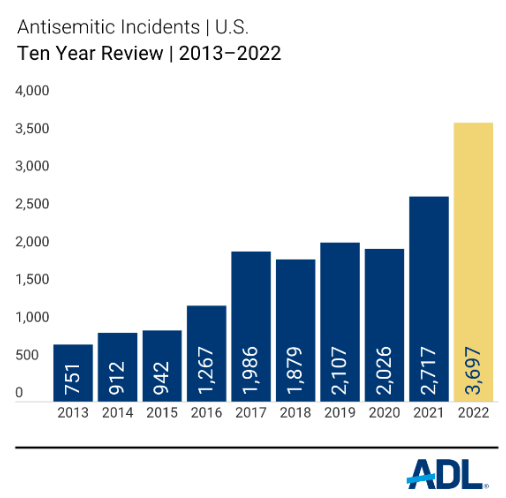
The Common Thread mural was created after two shootings occurred in the area in February 2023, funded by the Jewish Federation, LA vs. Hate, and the Anti-Defamation League (ADL). It was painted in the Pico-Robertson area of Los Angeles, which is a densely Jewish populated area, this June by an Iranian-Jewish muralist, Cloe Hakakian. “The [LA Jewish] community in particular felt beleaguered after the shootings,” according to LA Councilwoman Katy Young Yaroslavsky. And while the mural brings “visibility and pride to Jewish life in LA,” it does not change the reality that anti-Semitism is rising across the country. In 2022, incidents of anti Semitic harassment rose by 29%, acts of vandalism surged 51%, and physical assaults rose by 26%. There were 589 incidents specifically targeting Jewish schools, synagogues, and centers, and additionally, Anti semitic situations on college campuses have surged by 41%. Though these statistics were tracked before the current war in Israel, it is important to understand the overall trends of anti-Semitism in the past decades. While “[anti-Semitism] never fully goes away,” Yaroslavsky believes that “anti-Semitism comes in waves and [occurs] when people use it to stoke fear to further their own agenda.”
Even before the recent events in Israel, anti-Semitic incidents were the highest they have ever been since ADL started recording data in 1979. Here are three of the primary sources of the overall rise of anti-Semitism in America:
Lack of Holocaust and Jewish Education
Millions of Americans do not know basic facts about the Holocaust. Only 23 states require Holocaust education – half of those states have made laws in only the past 10 years, and most states recommend Holocaust education. In some states, certain parts of the history curriculum have been omitted. For example, the Florida Department of Education (DOE) rejected 35 books from their curriculum, and two of the rejected books aim to teach students about the Holocaust. In a 2020 study, it was found that around half of Gen Z and Millennial Americans don’t know that six million Jews were killed in the Holocaust, and although there were more than 40,000 camps and ghettos in Europe, 48 percent of people cannot name a single one. It’s been 78 years since the Holocaust. Survivors are dying out, and there is less of a reminder of what happened to the Jews. People have easily forgotten and left behind the dark past of Holocaust.
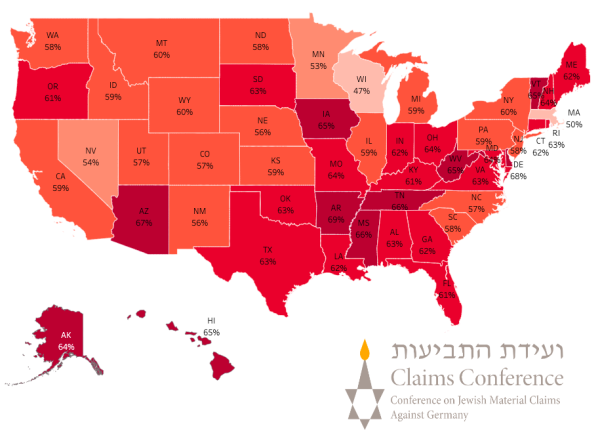
Rise of Hate on Social Media
Social media can help spread propaganda of Anti Semitic groups and distribute their message to people. In one study by ADL, it was found that there were 4.2 million Anti Semitic tweets in a year period on Twitter. In another study, it showed that 84% of anti-Jewish posts fail to be acted upon or taken down off social media.
Celebrities Using their Voice to Speak Against Jews and Normalization of anti-Semitsm
Kanye West has made dozens of Anti Semitic comments on social media and in interviews. Because of the claims he has made, and his influence on pop culture, his platform allows him to say what he wants to, and millions of people will see it. The danger with celebrities making Anti semitic remarks is that it appears normal to an average person, and it legitimizes and normalizes their statements. It almost seems tolerated to say Anti semitic statements when they are mainstreamed on such a high level. In a quote from ADL, the chief executive and national director Jonathan Greenblatt said, “If people see conspiracies behind every misfortune, it doesn’t take long for them to look at the Jews and say they’re the problem.” It is true that Jews have been the ones to blame for any arising issues mostly due to century old myths. If that persists, it becomes normalized that Jews are the problem – 78% percent of religion-based crimes are against Jewish people.
The government is putting in place strategies to address hate crimes, but those policies can only do so much. The fight of the community against anti-Semitism is of equal importance. If there is a combined effort to fight anti-Semitism, together, it can be combated. Councilwoman Yaroslavsky believes that “Jews need allies” and strategies that are particularly important and effective are “efforts that connect us with other communities that face discrimination.” Looking back, there is a long-standing partnership between the Jewish community and African American community throughout the civil rights movement, and also now there are close political collaborations between the two groups in LA. Of equal importance is the relationship with the AAPI community: “The Jewish and AAPI communities need to come together to talk about hate,” Yaroslavsky said. Overall, discriminated communities collaborating is an important effort to fight against hate crimes. In addition to the The Common Thread mural, the LA vs. Hate organization is making a series of murals sharing the stories of specific communities, the LGBTQ+ community, AAPI community, and the African American community.
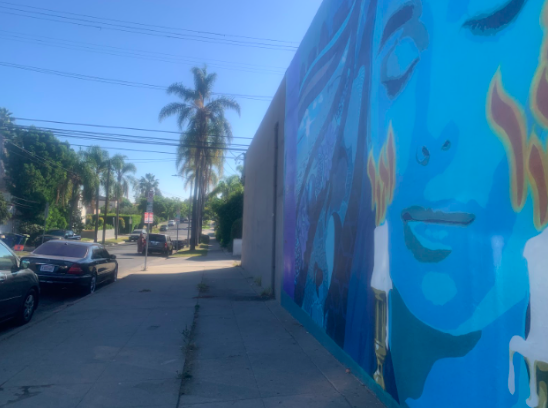
The Common Thread mural is an example of how we can represent the strength and unity of the community. It is a reminder of the significance of the L.A. Jewish community and the strength that binds us all together, despite all adversities. The Jewish community is very much indestructible and filled with an ever present drive of hope and love. The mural represents the strength and adaptability of the Jewish community, and symbolizes the ties between all Jews that pull us all together.
